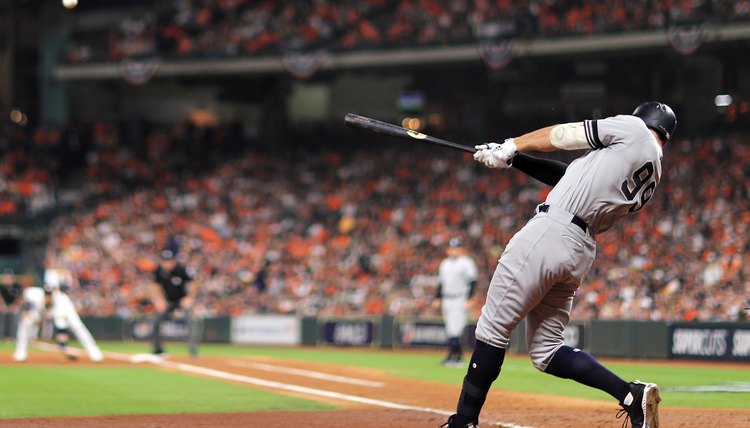How to Calculate Fastball Reaction Time

If you play baseball or fast pitch softball, you are all too familiar with the difficulty of hitting a well thrown fastball. According to major league baseball hitters, there is nothing more difficult than hitting a 100 mph fastball, 95 mph fastball, or even a 90-mph fastball, even if it is right down the middle of the strike zone. But what exactly makes it so difficult?
That’s where the idea of reaction time comes into play. In baseball, reaction time is the amount of time that a baseball player has to react to a pitch. Exactly how much time that is depends on the pitch speed and the type of pitch it is, but even then, the insane reaction times don’t vary by much more than a few milliseconds.
Understanding reaction time will give you a much deeper appreciation for how skilled a player has to be to hit 30 home runs in a single season- and might even make you less harsh on them for the occasional strikeout.

MLB Reaction Time
In the MLB, it takes less than a half second for a fastball to travel from the pitcher’s hand at their release point to home plate. That is all the time you have to react to the pitch. The average person’s reaction time is around 0.75 seconds. This means you must start your swing before the pitcher releases the ball and adjust once the ball has actually been thrown.
Calculating Reaction Time
- Use a baseball radar gun to measure the speed of a pitcher’s fastball. To take an accurate measurement, you should be in line with the ball’s path. That is, the pitch should be coming directly at you or traveling away from you.
- Convert miles per hour to feet per second. Multiply the miles per hour of the fastball by the number of feet in one mile, which is 5,280. Divide by the number of seconds in an hour, which is 3,600. For example, if a fastball travels 95 miles per hour, you have 95(5280/3600) = 139.33 feet per second.
- Divide the distance from the pitching rubber to home plate by the speed of the fastball in feet per second. On a major league ball field this distance is 60 feet 6 inches, or 60.5 feet. For a pitch traveling 139.33 feet per second, you have 60.5/139.33 = 0.434 seconds. Your fastball reaction time is therefore equal to 0.434 seconds.
TIP
Most pitchers release the ball about 5 feet in front of the pitching rubber. You need to meet the ball with your bat in front of home plate, which takes off about another 2 1/2 feet. In reality, that fastball may only have about 53 feet to travel, reducing the time you have to react to the pitch.
In youth leagues, the distance from the pitching rubber to home plate is often less than the major league standard of 60 feet 6 inches. For example, in Little League the distance is 46 feet. Check with your local league for the correct distance if you want to calculate fastball reaction time for a player in these leagues.
Writer Bio
Based in Atlanta, Georgia, W D Adkins has been writing professionally since 2008. He writes about business, personal finance and careers. Adkins holds master's degrees in history and sociology from Georgia State University. He became a member of the Society of Professional Journalists in 2009.
